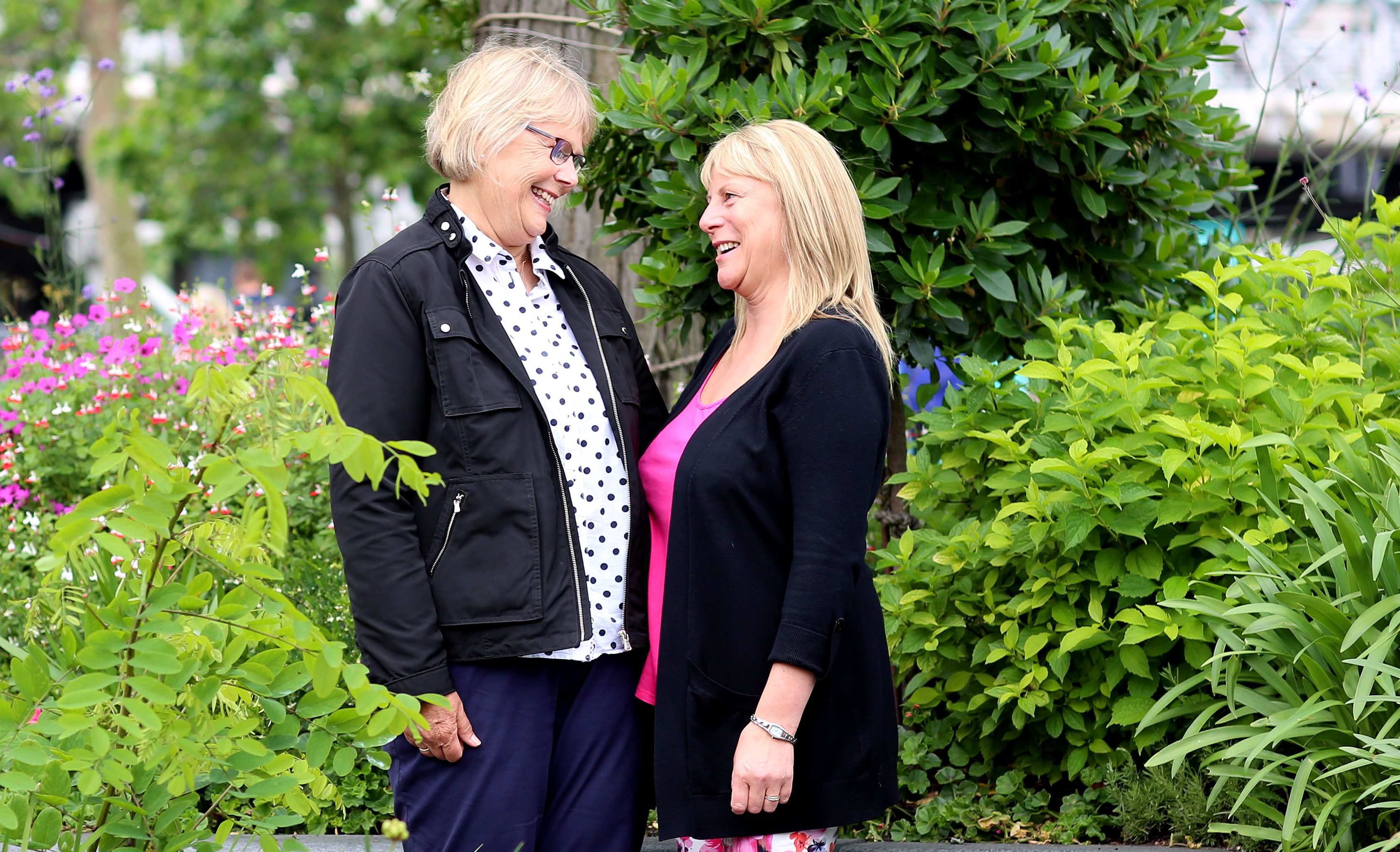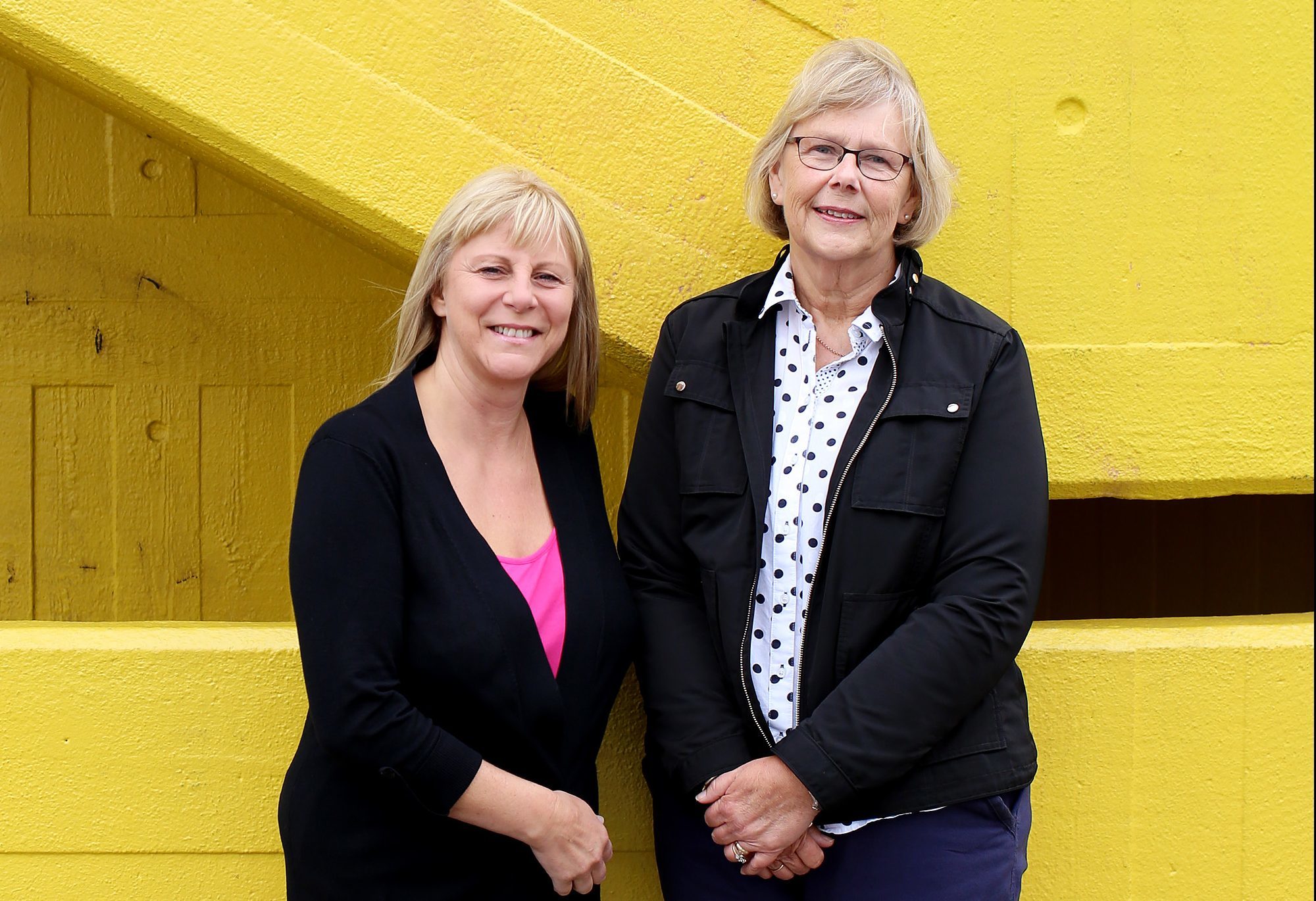
TWO women have been left stunned by the similarities between them after being matched by doctors in a billion-to-one life saving procedure.
Julie Merrilees has become best friends with her namesake Julie Rhoades after donating stem cells which saved the cancer sufferer’s life.
The two met following treatment which saved Ms Rhoades’ life last month, and were stunned by their similar appearance.
They had identical smiles, blue eyes and blonde hair colour and shared the same sense of humour.
“We just looked at each other,” said Julie, 51, from Newtongrange, Midlothian. “It was uncanny. I couldn’t take my eyes off her.”
The doppleganger she saved is Julie Rhoades, 58, from Tunbridge Wells, Kent.
The teaching assistant was dangerously ill in hospital suffering from acute leukaemia, and would have died without a donation of matching stem cells.
“I made a good recovery and wrote Julie a letter telling her I was so grateful for her life-saving donation,” said the recovered cancer patient.
“When I saw we had the same name I smiled.
“But when we met I saw we looked more like sisters.
“We also have similar personalities and the same sense of humour.
“When we went for a meal we even ordered the same dish, a salad.
“It is like I have found an identical twin I didn’t know I had. It is something hard to get your head around.”
Scottish donor Julie, who works with Buccleuch Estates in Dalkeith Country Park, enrolled on a stem cell matching charity’s register and had a feeling she would be called to save someone.
“Despite age and chance I fully expected to be matched with someone needing a stem cell transplant,” she said.
“In fact, I mentioned it to a new employer when I was offered a job.
“I told him, ‘I have signed up to be a donor for someone who has cancer and I expect to be going’.
“So it was no surprise when I was called by Anthony Nolan with the news that I was needed.
“They wanted to make sure I was still keen to donate.
“After going to London to donate, I didn’t hear any news for months.
“I wondered how the cancer patient had got on.
“Then I received a letter from her out of the blue saying all was well.
“We texted, emailed and called each other and eventually met up in London.
“It’s like we had known each other for years. We even have the same sense of humour and both find the similarities funny.
“Yet we are not related at all.
“I could tell that Julie was thinking the same.
“It is fascinating how you have someone who is virtually identical genetically, look the same and be complete strangers with different parents.
“It is just one of those bizarre quirks of nature, I guess.”
Gran-of-two Julie is now back at her job as a classroom assistant.
She said: “Julie saved my life.
“But I’ve also made a new friend – for life.” Julie said her sister Lisa, 47, was ruled out as a donor as she has a different blood group.
“I knew my only hope was a stranger who by chance would match me,” she said.
“Doctors had managed to keep me going with treatment but as is the case with serious leukaemia, that can only work for so long.
“I knew I needed a matching donor to survive.
“Now, thanks to Julie, I can go back to work and see my grandchildren grow up.”
There is no scientific reason why two people with a matching tissue type should be similar, says cancer expert, Professor Steve Marsh. The deputy director of research at Anthony Nolan added:
“This is pure coincidence. Donors and recipients tend to have a similar ethnic background, but that’s all.”
Julie Merrilees’ age makes her an unusual donor.
Typical candidates are young men, as they tend to make the best donors.
Medics would only opt for a woman in her 50s if there were no other matches.
Professor Marsh added: “Julie is fortunate to be alive.”
Last week it was revealed how three-year-old Ava Stark has an extremely rare blood condition and won’t survive without a stem cell transplant.
A matching donor pulled out leaving the family distraught.
The Scottish youngster’s plight has inspired hundreds of Scots to sign up to the Anthony Nolan bone marrow register.
Stem cells are obtained through taking blood from the donor, extracting the stem cells and transfusing the blood back into the body. It can also be done by taking the cells from donors’ bones.
For more information on how to donate and save someone’s life go to www.anthonynolan.org.
READ MORE
Double cancer survivor embarks on Lake District climbing challenge
In pictures: Shoppers double-take as celeb lookalikes stroll through intu Braehead

Enjoy the convenience of having The Sunday Post delivered as a digital ePaper straight to your smartphone, tablet or computer.
Subscribe for only £5.49 a month and enjoy all the benefits of the printed paper as a digital replica.
Subscribe